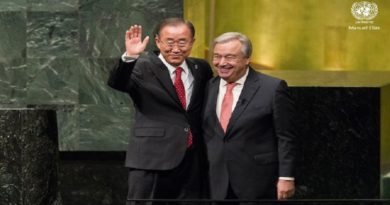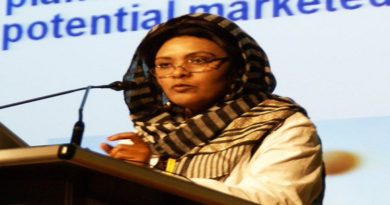Protect our children, ban lead in paint- UNEP
A new killer has been agonizing society, robbing it of vibrant children and often leaving families devastated and desperate for help. The killer is Lead. Chemicals and waste play critical roles in today’s society and economies; hence their contribution to regional and global trade in the overall economic growth of countries cannot be under-estimated. Many developed countries have over the years put in place robust systems and standards on sound management of chemicals and waste, but developing countries and countries with economies in transition still lack the capacity to manage and dispose of harmful substances in products in an environmentally sound manner. And herein, lies the problem.
Lead is a toxic heavy metal responsible for an estimated 600,000 new cases of intellectual disability among children every year, with the highest burden in developing regions. Of particular concern is the role of lead exposure in the development of intellectual disability in children. Though there has been wide recognition of this problem and many countries have taken action, lead exposure remains a key concern to health care providers and public health officials worldwide.
Children remain the most vulnerable and worst victims of lead poisoning. The consequences of brain damage from exposure to lead in early life include intelligence loss, shortened attention spans and disruption of behaviour. Since the human brain has little capacity for repair, these effects are untreatable hence remain irreversible. In adults, lead exposure can lead to high blood pressure, kidney complications, joint and muscle pain, decline in mental functioning, memory loss and mood disorders. It can also cause reproductive disorders such as reduced sperm count or abnormal sperms in men, as well as miscarriages and premature births in pregnant women.
In countries without proper policies on lead management the majority of children are exposed to lead during childhood. This exposure comes from toys and often dons the walls of households, schools and playgrounds frequented by kids. Despite these realities and scares, the good news is that there is hope. Through the combined efforts from various players, tremendous progress has been made in the fight on banning lead paint.
In the UN system, the UN Environment is leading activities related to the sound management of chemicals. Through its Chemicals and Waste Management programme, it aims to promote chemical safety by supporting countries with access to information on toxic chemicals. UN Environment promotes chemical safety by providing policy advice, technical guidance and capacity building to developing countries and those with economies in transition, including activities on chemicals related to the implementation of the Strategic Approach to International Chemicals Management (SAICM). Countries, businesses and other stakeholders are supported to improve their capacity to manage chemicals and waste soundly throughout their life-cycles. This is achieved by jointly developing policy instruments, including regulatory frameworks, and providing scientific and technical knowledge and tools needed to ensure a successful transition among countries towards sound management of chemicals and waste in order to minimize impact on the environment and human well-being.
Last year, the International Lead Poisoning Prevention Week ran from October 23-29; the campaign urged countries to ban the dangerous substance from paints by 2020. A global movement is working hard to push for change. The Global Alliance to Eliminate Lead Paint –led by UN Environment and the World Health Organization – has set the target for all governments to ban lead in paint by 2020. In Africa, UN Environment has facilitated workshops in Addis Ababa, Dar es Salaam and Yaounde bringing together key agencies and regulatory bodies in the region and sub-regions to establish and harmonize standards and policies to limit lead in paint in an effort to minimize the significant adverse effects it has on human health and the environment.
As part of the International Lead Poisoning Prevention Week, a consultative meeting with a large panel of stakeholders including governmental agencies, paint manufacturers and informal recyclers, the academic and scientific research community, the civil sector, lead to strong commitment of all the stakeholders to move forward on the road of phasing out lead and other heavy metals in products in Kenya.
UN Environment’s Regional Coordinator, Chemicals and Waste Management Programme, Prof Abdouraman Bary, confirms that the global goal for eliminating lead in paint is very achievable. “Substitutes for lead in paint are not only safer, but more cost-effective since they are readily available locally. Preventing lead poisoning from paint is entirely preventable but requires commitment from all the stakeholders,” he said.
As an example, the Kenya Bureau of Standards (KBS) has finalized new regulations that will bar the manufacture, importation and sale of paints whose lead content exceeds the safe threshold of 90 parts per million (ppm). The new standards have been endorsed by the KBS Board and are expected to be gazetted during the first quarter of this year but a lot of public awareness is also necessary for adequate enforcement,” said Peter Namutala Wanyonyi, Principal Standards Officer at KBS. The Kenyan experience will be share across the entire East Africa Community region for further harmonization of standards to avoid trade barriers.
The informal sector in much of Africa also remains vulnerable because many people do not use protective gear and are simply unaware or ignorant of the dangers of lead exposure. Hence, public awareness and sensitization must be enhanced and should also be a priority for governments, alongside the policy and regulatory frameworks adopted to ban lead paint.
UNEP




